Because of lack of Graphics object in certain places in my application, I decided to use TextRenderer class. What is quite surprising though is that it adds a lot of margins to measured text. For example:
private void button1_Click(object sender, EventArgs e) {
using (var g = this.CreateGraphics()) {
Font font = new Font("Calibri", 20.0f, GraphicsUnit.Pixel);
Size size = TextRenderer.MeasureText("Ala ma kota", font);
g.DrawRectangle(Pens.Red, new Rectangle(new Point(10, 10), size));
TextRenderer.DrawText(g, "Ala ma kota", font, new Point(10, 10), Color.Black);
}
}
Gives the following result:

Why does it do so? Is there a way to force it to get the real text size? (and of course draw it in the same rectangle it returns)